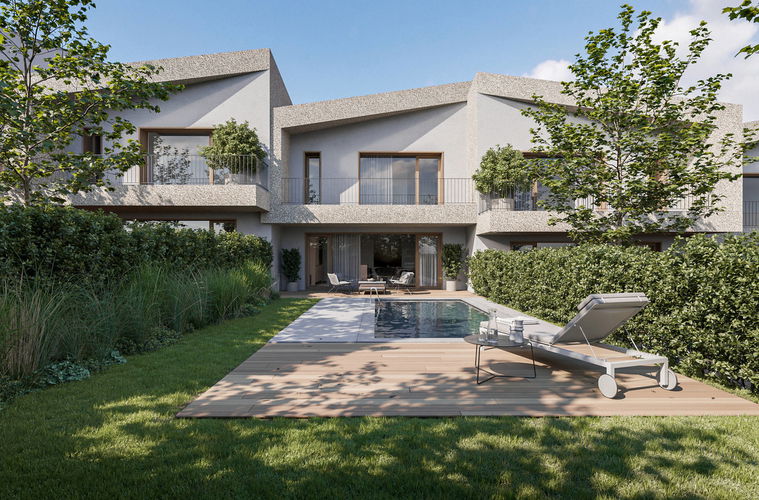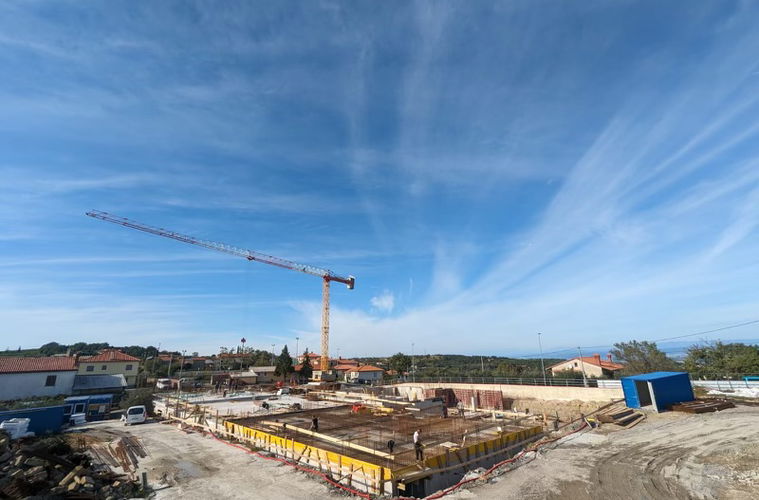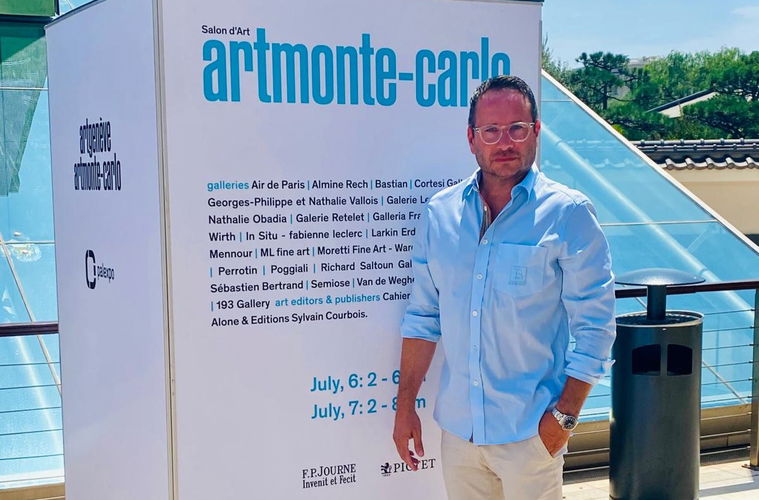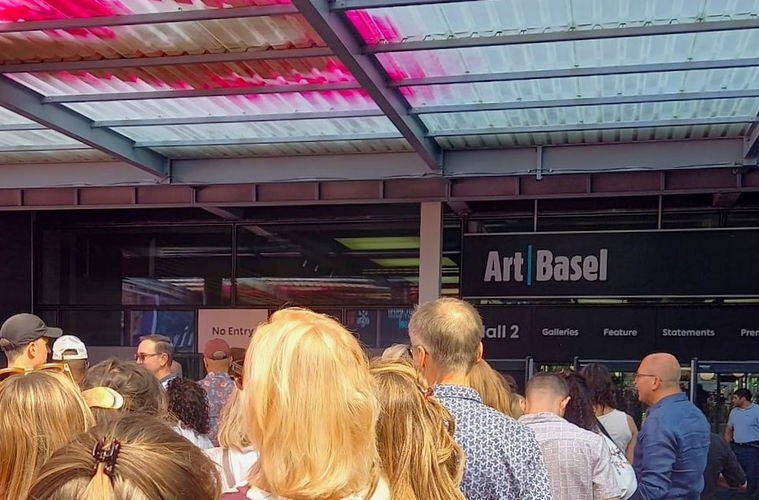"The real estate market is showing classic signs of an emerging bubble".
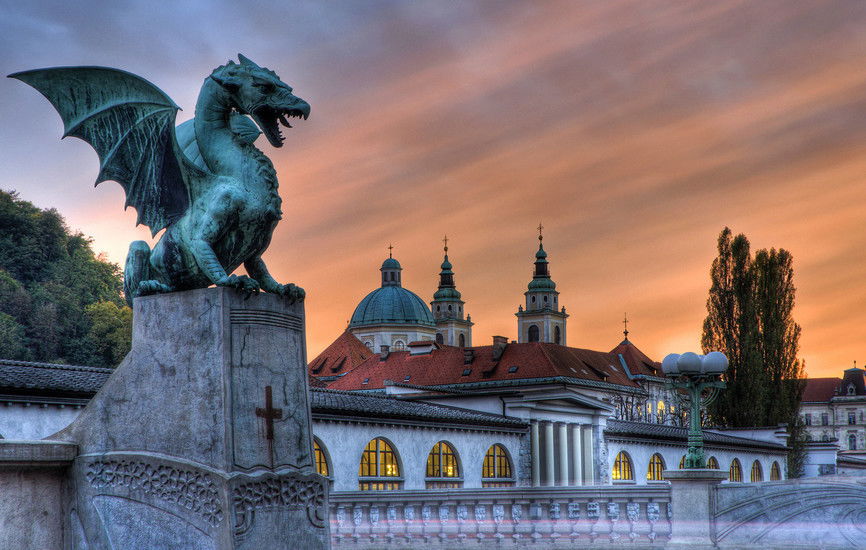
The Slovenian real estate market is growing again, as evidenced by the record number of sales of residential real estate in the first half of this year, as can be seen from the report of the Geodetic Administration for 2017. As many as 17,200 real estates with a total value of more than one billion euros were sold.
Excellent sales numbers are followed by skyrocketing prices, and in the hottest locations, such as Ljubljana and Obala, the prices of second-hand apartments practically reach the price of new ones. Has the real estate bubble started to inflate with the help of currently extremely favorable lending, or are prices simply returning to normal levels?
The real estate market is currently booming in Slovenia due to "cheap loans and the expectation that prices will continue to rise," economist Igor Masten commented on the euphoria on the real estate market for MMC, adding that "the classic characteristics of an emerging bubble can be observed." We are not yet close to the record values before the crisis, but "we are firmly on the way to dealing with an overheated market again", he reminded.
Sales are driven by favorable credit
When real estate prices start to rise, people start looking at them as an investment opportunity in the sense of buy now and sell for more later. Investors thus recognize a good investment, and everything is driven by cheap credits. "The low cost of financing, or a large amount of cheap liquidity, is also known in the real estate market, and most of this money has spilled over into the stock market, where, according to cyclically adjusted indicators, we have historically record values that the world has not seen before," explained Masten and at the same time warned , that the bubble in world stock markets has been present for several years.
"The main reason for the rise in property prices is the big fall after 2008, sooner or later the trend had to reverse back up towards the levels where prices were already, construction, which was hugely overvalued at the time, for example, is still 40 percent lower ," economist Jože Mencinger commented on the rise in real estate prices, who is convinced that the Slovenian real estate market is not yet inflating a bubble, but that prices are returning to normal levels.
"Credits for the economy are not increasing at all, but they are increasing very quickly for the population, but the Slovenian population is very debt-free compared to other Europeans," he explained, adding that Slovenians take on the most debt precisely because of housing. If such growth in borrowing, which is made possible by "cheap" lending, were to continue for a few more years, it could also become a problem in Slovenia, he warned.
Non-specific Slovenian real estate market
In Slovenia, the retail segment of bank portfolios has never been problematic, Masten also agreed, adding that the banking hole was not caused by the financing of overpriced apartments. Excessive indebtedness of the population due to real estate was never a danger, the main problem of Slovenian banks was loans to companies, he recalled. The Slovenian situation is specific, as more than 80 percent of apartments in Slovenia are owner-occupied.
"Slovenia has a huge number of owner-occupied apartments, there are very few rented ones, which is a result of the socialist times, when people used credit to build, but inflation paid them off," said Mencinger, and at the same time reminded of the Jazbinšek Act, which made people the owners of social housing. apartments in which they lived.
Mencinger: The ECB's financial bubble is inflating
How is the economic and financial development on the stock market related to the real estate market? "I personally don't believe in the stock market, the stock market is inflated primarily by monetary policy, which creates large amounts of money that does not flow into loans, but instead remains on the financial markets and goes into stock purchases, which leads to a large financial bubble, which created by the European Central Bank (ECB); it has so far created 80 billion euros of new primary money per month (until March 2017), which is almost twice the annual GDP of Slovenia," Mencinger replied that the consequences of the "quantitative easing" of money, which enables cheap crediting, sooner rather than later they showed at the ECB, because "the bubble will most likely burst".
According to Mencinger, the ECB's monetary policy is not working, as zero or even negative interest rates should stimulate investments, but this is not the case. "The new cheap money doesn't go anywhere, but stays in the financial sector, where it accumulates, sometimes even the banks lend money they don't need back to the central bank for negative interest; at one time it was normal that if you lent money to someone, you earned interest, but now you pay for them to get your money in the first place," he pointed out the paradoxical situation that "banks now live solely on payment transactions".
Will new buildings or a new crisis lower prices?
"The new constructions will partially bring down the price, but it will take some time. The new constructions at the moment are the completion of what was abandoned in 2008 and 2009, and what was half-built then fell into disrepair, or the construction pits were in that euphoria meager, and only now are these pits slowly filling up," replied Mencinger. "Even as a student in America, I was convinced that the great crisis of the 1930s could no longer happen, because the states and banks now have so much control that they will not allow it, but that was not the case, because in 2008 the world experienced the big crisis, which was blamed on private financial institutions, but they blamed the public sector, which was not to blame, but had to borrow and save private banks," he added.
Real estate prices will only be lowered by the next economic crisis, which will most likely be caused by "disruption" in the form of a new financial crisis, when the bubble bursts, replied Masten and at the same time warned that the banking system is now significantly more robust and able to absorb such shocks. because it is much better capitalized than before the last crisis. When asked when the bubble will burst, he replied diplomatically: "Not really soon, not within 12 months." However, this may happen when the interest rate is raised, although the central banks hope that a "soft landing" will occur, but not a burst of the bubble.
"In the coming years, approximately 2,500 apartments will come on the market in Ljubljana alone. This is already a number that may exceed demand. Especially because mainly high-end apartments are being built, and the purchasing power is still not that high, as young couples and families without parents, grandmothers and grandfathers are not able to buy," the director of the real estate agency Stan Stanka Solar pointed out for MMC.
Do properties sell themselves?
"I can confirm the statement that they are selling themselves, because the demand is really high, traffic is moving quickly, and things are very liquid," Zoran Đukić, director of the real estate agency Stoja, confirmed for MMC, adding that everything reminds of the years 2005 and 2006 , before the last crisis hit. "We waited seven years for the market to bottom out, people huddled in rentals or with their parents and waited, and another reason is currently very active bank financing on extremely favorable terms," he concluded.
In Đukić's words, the extremely low fixed interest rate caused that "mathematics became interesting again for investors who rent out apartments. If you buy with a loan with a fixed interest rate of 2%, and rent out the apartment with a yield of 4 to 5%, the loan he pays it himself, but he still has money left over for taxes".
"Demand is mainly for smaller residential units in good locations, suitable for investment, and it far exceeds the supply. Among today's buyers, the number of foreigners is increasing, which was not the case in the years before the crisis," said Solar.
The hottest in the center of Ljubljana, followed by the coast
According to Đukić, the greatest demand is in the center of Ljubljana, followed immediately by the more beautiful places along the Slovenian coast. "The reason for these purchases is often short-term rental to tourists, including through applications such as Airbnb and Booking.com," he pointed out. Elsewhere in Slovenia, there is no euphoria, except perhaps in Nova Gorica, where there is also a shortage of apartments, he added.
Prices are already close to their peak, so there shouldn't be much room for additional price increases. "Used apartments may become even more expensive, especially the best locations in Ljubljana, such as Center, Trnovo, Argentinski Park, etc., apartments 50 or 60 square meters in size, with parking and everything, can become even more expensive up to five or six thousand euros per square meter," he stated where in Ljubljana the prices reach the most dizzying numbers. But these are only extreme cases, according to him, the real average price of a new building in Ljubljana will stabilize at around three thousand per square meter.
"There are few new properties, but they are becoming very expensive. It is not rare that the expected prices in smaller villa blocks in more interesting locations are sold for four thousand euros per square meter or more. New apartments are practically sold out before they are even built," she confirmed. also Solar's.
Celovški dvori: 600 offers for 60 apartments
According to Đukić, the sale of Celovška dvori in Ljubljana did not have any impact on the real estate market, because the lack of apartments in Ljubljana is so great that "we could have three more Celovška dvori, and nothing would change". In the sale of the Celovški dvori, the demand exceeded the offer up to ten times. "We had 500 to 600 offers for 60 to 100 apartments in three phases of sales," he stated.
"In the last part, the mansions in Celova were sold at market prices, and most of the apartments were sold to investors for rental. It will be interesting to see what will happen to the price of these apartments in the future," explained Solar.
How realistic are the advertised prices?
During the crisis, up to 30 percent lower prices than advertised were realized, but now it is not uncommon for apartments to be sold at a higher price than advertised when too many interested buyers appear at the same time, Đukić pointed out. "I would advise investors not to buy too expensive plots, where it is not possible to realize a final sale price of less than three thousand euros per square meter, except for extremely good locations in the city center, and buyers not to rush, because a lot is being prepared, considering the prices used real estate, relatively affordable projects," Đukić advised.
According to Stanka Solar, in certain cases it is possible to reduce the price by about five percent, but in the case of really interesting properties, the achieved price can often be even higher than the advertised one. "When buying real estate with mortgage loans, I would advise caution and take into account the main rule that when buying real estate, location, location and location are important, i.e. a couple of square meters less in a sought-after location is better than a couple of square meters more in a less sought-after location," concluded Solar.
Source: www.rtvslo.si

